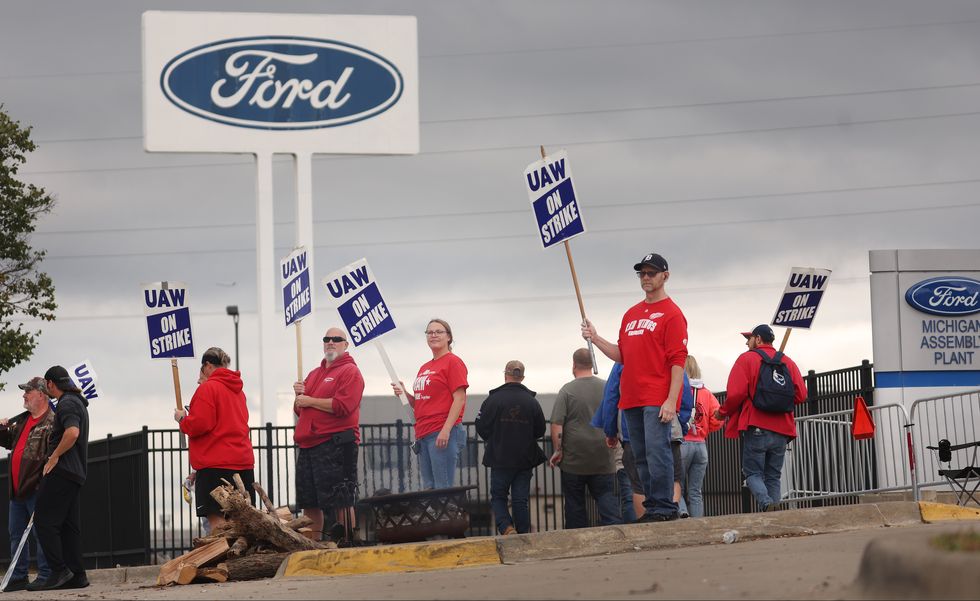UAW Strike Updates: Major Happenings and What Comes Next
The UAW (United Auto Workers) strike of 2023 has had a significant impact on the automotive industry, capturing international attention and leading to widespread production stoppages. In this article, we will take a closer look at the major happenings of the strike and explore what may come next for the UAW and the affected automakers.
The Initial Strike: Three Plants and Thousands of Workers
The UAW strike began on September 15, with approximately 13,000 UAW members halting work at three plants. The first plant affected was Ford’s Michigan Assembly in Wayne, Michigan, where the production of the Bronco and Ranger takes place. The strike then spread to GM’s Wentzville Assembly in Wentzville, Missouri, which produces vehicles like the Chevrolet Colorado and GMC Canyon. The third plant to be affected was the Stellantis Toledo Assembly Complex in Toledo, Ohio, where the Jeep Wrangler and Gladiator are manufactured.
Expansion to 38 New Production Facilities
Within a week of the initial strike, the UAW expanded its action to include 38 General Motors and Stellantis facilities across 20 states. This move saw an additional 5,600 workers walking out of their jobs, further escalating the strike and increasing pressure on the automakers. UAW president Shawn Fain stated that Ford had avoided additional stoppages due to their commitment to reaching a deal, but GM and Stellantis faced further consequences.
President Biden’s Visit and Support
The UAW strike gained even more attention when President Joe Biden visited the picket lines on September 26. This marked the first time a sitting U.S. president had joined a picket line in recent history. President Biden praised the UAW for their past sacrifices and emphasized that the workers should be benefiting from the industry’s success. Former President Donald Trump also visited Michigan during his 2024 election campaign, but his focus was more on criticizing the industry’s shift towards electric vehicles rather than supporting the striking workers.
Layoffs and Supplier Impact
As the strike continues, its impact is being felt beyond the automakers themselves. Auto suppliers such as CIE Newcor and Dana have already announced layoffs due to the ongoing strike. CIE Newcor, a manufacturer of components and subassemblies, and Dana, a powertrain supplier, have warned of hundreds of layoffs. If the strike persists, these layoffs are likely to increase, affecting not only the automakers but the broader automotive ecosystem.
Negotiations and Potential Escalation
As the strike enters its third week, negotiations between the UAW and the Big Three automakers (Ford, GM, and Stellantis) are ongoing. UAW president Shawn Fain has expressed a willingness to escalate the strike if significant progress is not made. The UAW’s rolling Stand Up Strike may be expanded further, potentially impacting additional plants and putting more pressure on the automakers to meet the union’s demands.
Uncertain Future: Possible Scenarios
The future of the UAW strike remains uncertain, with different potential scenarios on the horizon. One possibility is that the UAW may lift the strike on the initial plants and choose to target the Big Three in other locations. This would restore pay for workers in the original plants while spreading chaos and creating additional challenges for the automakers. However, the exact course of action is still unclear.
Market Implications and Competitive Advantage
While the UAW strike poses challenges for the Big Three automakers, it also presents an opportunity for their competitors. Companies like Hyundai, Tesla, Rivian, and Toyota may benefit from the strike by gaining market share and attracting both customers and skilled labor. If the strike continues for an extended period, it could impact the market position and job security of the Big Three, creating a potential advantage for their competitors.
The Role of Public Support and Solidarity
Public support and solidarity play a crucial role in the UAW strike. The visit of President Biden to the picket lines demonstrates the importance of political backing for the union’s cause. Additionally, support from the general public, customers, and other labor organizations can help strengthen the UAW’s position and increase the chances of a favorable outcome for the striking workers.
The Impact of Electric Vehicle Transition
While the UAW strike is primarily driven by labor disputes and contract negotiations, it also highlights the challenges and changes facing the automotive industry. The industry’s shift towards electric vehicles, as criticized by former President Trump, is a significant factor in the ongoing strike. The transition to electric vehicles brings new opportunities and challenges, impacting jobs, supply chains, and market dynamics.
Conclusion: What Lies Ahead
As the UAW strike continues, the automotive industry and its stakeholders are closely watching for any developments. The expansion of the strike to 38 new production facilities and the visits of both President Biden and former President Trump have raised the stakes and highlighted the significance of the ongoing labor dispute. The future of the strike remains uncertain, with negotiations, potential escalations, and market implications all playing a role in shaping the outcomes for the UAW and the automakers involved.
In conclusion, the UAW strike of 2023 is a complex situation with far-reaching implications for the automotive industry. The major happenings, including the initial strike, expansion to new facilities, presidential visits, layoffs, and ongoing negotiations, all contribute to the evolving narrative. As the strike continues, its impact on the market, competitive landscape, and the future of work in the industry will become increasingly apparent.




